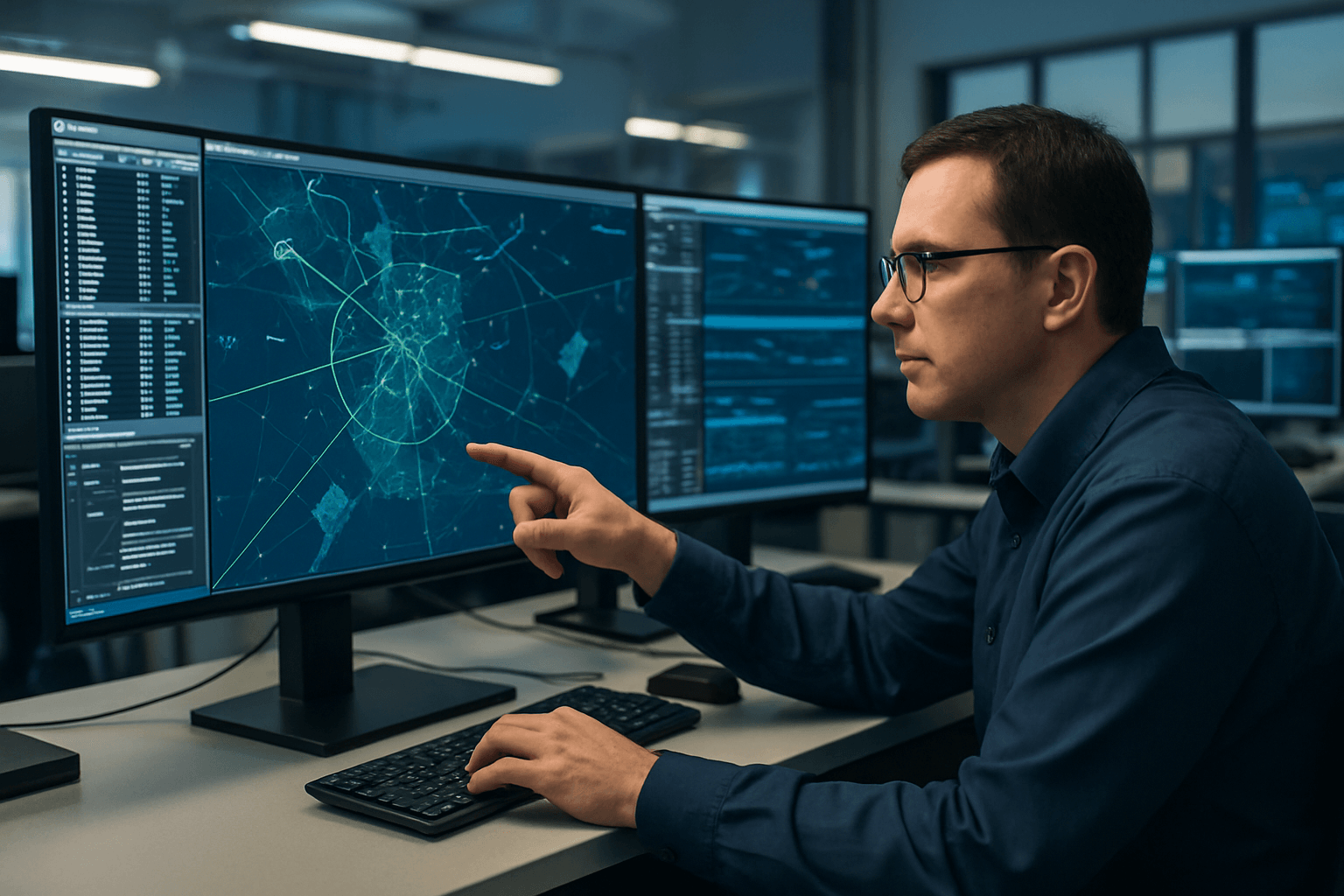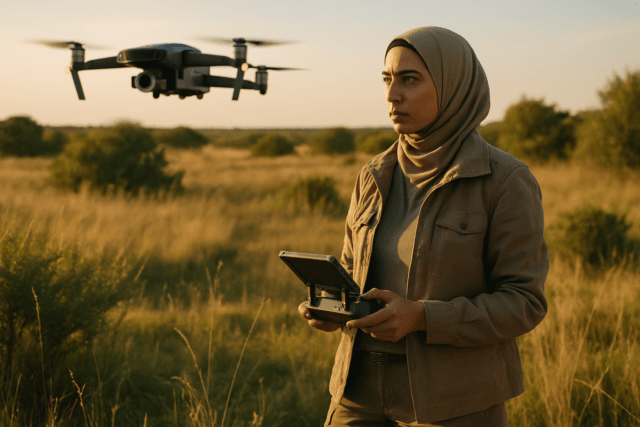The surge in drone usage across various sectors, from package delivery to infrastructure inspection, presents both exciting opportunities and complex challenges for airspace management. Integrating drones safely and efficiently into existing airspace requires a comprehensive approach that addresses regulatory frameworks, technological advancements, and the evolving needs of airspace users. This article delves into the current state of drone airspace management in the UK, exploring the regulations, technologies, and future initiatives that are shaping the future of drone operations.
Understanding the Regulatory Landscape
In the UK, the Civil Aviation Authority (CAA) is the governing body responsible for regulating drone operations. The CAA’s primary objective is to ensure the safety and security of the public while fostering innovation and growth in the drone industry. UK drone regulations are based on the principle that “UAS operating in the UK must meet at least the same safety and operational standards as manned aircraft when conducting the same type of operation in the same airspace”.
Key Regulations and Guidelines
Several key regulations and guidelines govern drone operations in the UK:
- The Air Navigation Order 2016 (as amended): This order provides the overarching legal framework for aviation in the UK, including regulations specific to unmanned aircraft systems (UAS).
- UK Regulation (EU) 2018/1139 (the Basic Regulation): This regulation, retained post-Brexit, sets out the fundamental principles for aviation safety and airworthiness.
- CAP 722 (Unmanned Aircraft System Operations in UK Airspace – Guidance): This document provides detailed guidance on how to comply with the regulations outlined in the Air Navigation Order and the Basic Regulation.
Registration and Identification
All drone operators in the UK must register with the CAA and obtain an Operator ID if their drone weighs 250g or more, or if it is equipped with a camera (unless it’s classified as a toy). Additionally, anyone intending to fly a drone weighing 250g or more must pass an online theory test and obtain a Flyer ID. These measures ensure accountability and promote responsible drone operations.
Categories of Drone Operations
UK drone regulations divide operations into three categories based on risk:
- Open Category: This category covers low-risk flights that do not require specific authorization from the CAA. These flights typically involve lighter drones and adhere to basic safety rules, such as maintaining visual line of sight (VLOS) and flying in unrestricted areas. The Open category is further divided into subcategories (A1, A2, A3) based on the type of drone and the proximity to people.
- Specific Category: This category encompasses more complex operations that fall outside the boundaries of the Open Category. These operations require authorization from the CAA and often involve a General Visual Line of Sight Certificate (GVC) and an operations manual outlining risk assessments and safety procedures.
- Certified Category: This category covers very complex operations that pose an equivalent risk to manned aviation. Regulations for the Certified Category are still under development, and operations are currently regulated based on manned aviation regulations.
Flight Restriction Zones
To ensure the safety of manned aircraft, the UK has established Flight Restriction Zones (FRZs) around protected aerodromes. It is illegal to fly any drone within these restricted zones without permission from air traffic control or the aerodrome operator. FRZs typically extend outwards from the aerodrome and upwards to a height of 2,000 feet.
Technological Advancements in Airspace Management
Technological innovation is critical to enabling the safe and efficient integration of drones into the airspace. Several key technologies are playing a significant role in advancing drone airspace management:
Unmanned Traffic Management (UTM) Systems
UTM systems are designed to manage drone traffic in a safe and efficient manner, preventing collisions and optimizing airspace utilization. These systems provide a range of services, including:
- Flight planning and authorization: UTM systems allow drone operators to submit flight plans and obtain authorization to fly in specific areas.
- Airspace awareness: UTM systems provide drone operators with real-time information about airspace restrictions, weather conditions, and other air traffic.
- Conflict detection and avoidance: UTM systems use algorithms to detect potential conflicts between drones and other aircraft and provide alerts to operators.
- Remote identification: UTM systems enable the remote identification of drones, allowing authorities to track and monitor drone activity.
Several companies are developing and deploying UTM systems in the UK and around the world. For example, NATS is developing NATS OpenAir, an integrated traffic management solution designed to accommodate new airspace users, including drones. Unifly, a Belgian company, has deployed UTM platforms on a national scale in several countries, including Canada, Germany, Spain, and Belgium. Altitude Angel has built drone superhighways in the UK, connecting the airspace above several cities.
Detect-and-Avoid (DAA) Technology
DAA technology is essential for enabling drones to operate safely beyond visual line of sight (BVLOS). DAA systems use sensors, such as radar and cameras, to detect other aircraft in the vicinity and automatically avoid collisions.
Geo-Fencing
Geo-fencing technology creates virtual boundaries that prevent drones from entering restricted airspace. These systems use GPS or other location-based technologies to ensure that drones remain within designated areas.
Remote Identification (Remote ID)
Remote ID technology allows drones to be remotely identified, providing authorities with information about the drone’s location, altitude, and operator. This technology is crucial for enhancing accountability and security in drone operations.
Future Initiatives and Developments
The future of drone airspace management in the UK is focused on further integrating drones into the national airspace system and enabling more complex and advanced operations. Several key initiatives and developments are underway:
U-Space Implementation
U-Space is a European initiative designed to create a harmonized regulatory and technological framework for drone operations. U-Space aims to enable safe, efficient, and secure drone operations by providing a range of services, including:
- e-identification: Electronic identification of drones.
- Geo-awareness: Providing drone operators with real-time information about airspace restrictions.
- Traffic information: Sharing traffic information between drones and other airspace users.
- Conformance monitoring: Monitoring drone operations to ensure compliance with regulations.
The implementation of U-Space in the UK is expected to unlock new opportunities for drone operations, particularly in areas such as urban air mobility and drone delivery.
Airspace Modernization
The CAA is working to modernize the UK’s airspace to accommodate the growing number of drones and other new airspace users. This includes initiatives such as:
- Developing new airspace structures and procedures: Creating more flexible and efficient airspace designs to accommodate drone operations.
- Implementing advanced air traffic management technologies: Deploying new technologies to improve the safety and efficiency of air traffic management.
- Enhancing collaboration between airspace users: Fostering collaboration between manned and unmanned aircraft operators to ensure safe and efficient airspace utilization.
Integration of AI and Machine Learning
Artificial intelligence (AI) and machine learning (ML) are poised to play a significant role in the future of drone airspace management. AI and ML can be used to:
- Automate air traffic management: AI-powered systems can automate many of the tasks currently performed by air traffic controllers, improving efficiency and reducing workload.
- Improve conflict detection and avoidance: AI algorithms can analyze data from multiple sources to predict potential conflicts and provide timely alerts to operators.
- Optimize flight paths: AI can be used to optimize flight paths for drones, minimizing fuel consumption and reducing congestion.
Challenges and Opportunities
While the future of drone airspace management in the UK is promising, several challenges and opportunities need to be addressed:
Regulatory Harmonization
Harmonizing regulations across different countries and regions is essential for enabling seamless cross-border drone operations. The UK is working with international organizations to promote regulatory harmonization and develop common standards for drone operations.
Public Acceptance
Gaining public acceptance of drone technology is crucial for its widespread adoption. Addressing concerns about privacy, safety, and noise pollution is essential for building public trust in drone operations.
Cybersecurity
Protecting drone systems from cyber threats is critical for ensuring the safety and security of airspace. Implementing robust cybersecurity measures and developing protocols for responding to cyberattacks are essential for mitigating risks.
Skills Development
Developing a skilled workforce is essential for supporting the growth of the drone industry. Investing in training programs and educational initiatives is crucial for ensuring that the UK has the expertise needed to develop, operate, and maintain drone systems.
Conclusion
Drone airspace management is a rapidly evolving field that presents both challenges and opportunities for the UK. By implementing robust regulatory frameworks, investing in technological advancements, and fostering collaboration between stakeholders, the UK can create a safe, efficient, and sustainable airspace system that unlocks the full potential of drone technology. As drone operations become more integrated into daily life, effective airspace management will be crucial for ensuring the safety, security, and prosperity of the UK.





